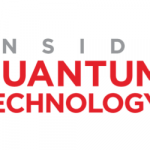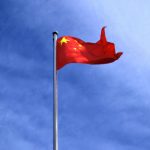Quantum News Briefs November 7: Closing the barn door on ‘store now, decrypt later’ attacks; What quantum technology means for Canada’s future; Europe bets on collaboration and talent pool in global quantum race with QuantERA
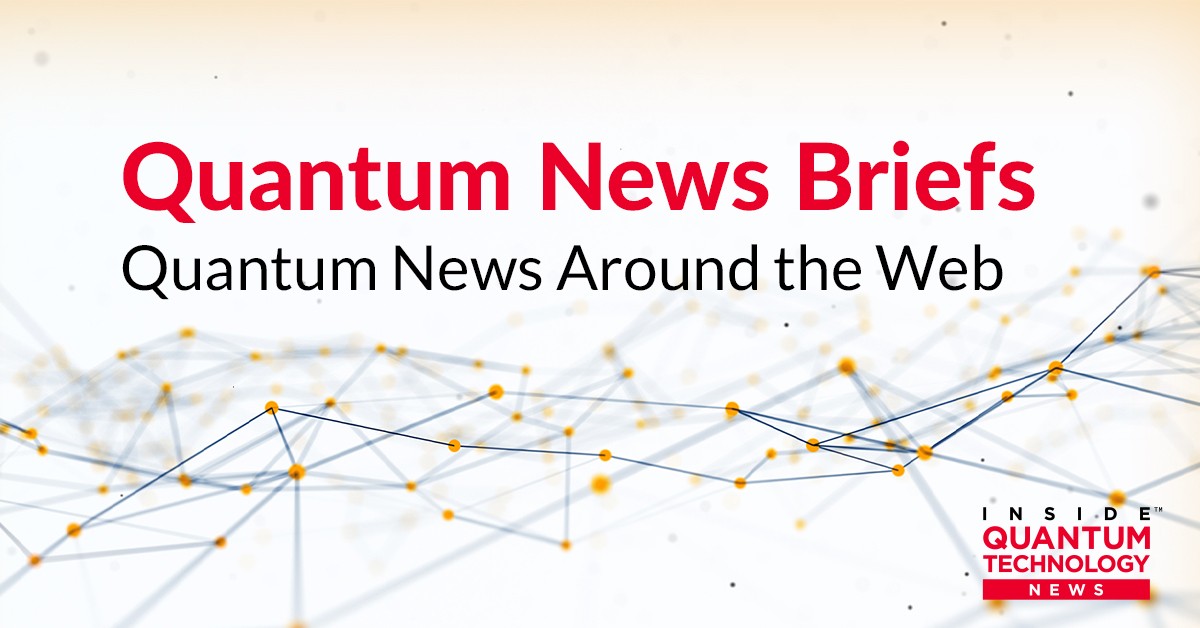
Quantum News Briefs November 7 begins with Closing the barn door on ‘store now, decrypt later’ attacks; What quantum technology means for Canada’s future; and Europe bets on collaboration and talent pool in global quantum race with QuantERA + MORE.
*****
Closing the barn door on ‘store now, decrypt later’ attacks
 Zhanna L. Malekos Smith is a senior associate with the Strategic Technologies Program and the Aerospace Security Project at the Center for Strategic and International Studies in Washington and an assistant professor in the Department of Systems Engineering at the U.S. Military Academy at West Point, where she also serves as a fellow with the Army Cyber Institute and affiliate faculty with the Modern War Institute is the author of a November5 editorial in TheHill picturesquely entitled “Closing the Barn Door on ‘store now, decrypt later’ attacks.
Zhanna L. Malekos Smith is a senior associate with the Strategic Technologies Program and the Aerospace Security Project at the Center for Strategic and International Studies in Washington and an assistant professor in the Department of Systems Engineering at the U.S. Military Academy at West Point, where she also serves as a fellow with the Army Cyber Institute and affiliate faculty with the Modern War Institute is the author of a November5 editorial in TheHill picturesquely entitled “Closing the Barn Door on ‘store now, decrypt later’ attacks.
Opponents are waging SNDL attacks against the United States, exfiltrating and storing encrypted data today to decrypt it in the future using post-quantum cryptography (PQC) algorithms. PQC refers to a technological milestone when advanced quantum computers attain “a sufficient size and level of sophistication” and can break classical public-key encryption methods that secure our internet-based communications and financial transactions.
The Biden administration’s May 2022 executive order and two national security memorandums on quantum computing describe post-quantum systems as “cryptanalytically relevant quantum computers,” meaning they could pose significant national, economic and cybersecurity risks to the United States by weakening present public-key cryptography.
Preparation is a quintessential element of success. As Anne Neuberger, deputy assistant to the U.S. president and deputy national security adviser for cyber and emerging technology, announced during a panel at CSIS, “The process of rolling out new encryption that can defend against a potential quantum computer is not a one-year effort; it’s a lengthy effort.”
Transitioning critical infrastructure toward federally approved PQC standards is not a minor undertaking. Rather, it is a complex and delicate challenge that cuts across the public and private sectors.
By its very name, SNDL attacks focus on playing the long game and exploiting delays with implementing more advanced security protocols.
Click here to read the entire editorial in November 5 TheHill.
*****
What quantum technology means for Canada’s future
 Canada is a world leader in developing quantum technologies and is well-positioned to secure its place in the emerging quantum industry. Quantum News Briefs summarizes below Stephanie Simmons article in “The Conversation“. Simmons is associate Professor, SFU and Tier 2 Canada Research Chair in Silicon Quantum Technologies
Canada is a world leader in developing quantum technologies and is well-positioned to secure its place in the emerging quantum industry. Quantum News Briefs summarizes below Stephanie Simmons article in “The Conversation“. Simmons is associate Professor, SFU and Tier 2 Canada Research Chair in Silicon Quantum Technologies
The potential impact of these technologies on the Canadian economy will be transformative: the National Research Council of Canada has identified quantum technology as a $142 billion opportunity that could employ 229,000 Canadians by 2040.
To maintain its leadership, Canada needs to move beyond research and development and accelerate a quantum ecosystem that includes a strong talent pipeline, businesses supported by supply chains and governments and industry involvement. There are a few things Canada can do to drive this leadership:
Continue to fund quantum research: Canada has more than a dozen quantum research institutes and labs
Build our talent pipeline with more open immigration: Even though quantum experts are trained in every major university in Canada, the demand for them is three times the number of new graduates.
Be our own best customers: Canadian companies are leading the way, but they need support. What early quantum companies need most is customers: early, major procurement contracts, or DARPA-like moonshot contracts. Without these contracts, the entire Canadian quantum industry will slip away into other jurisdictions that focus investment and procurement on domestic bidders.
Canada is poised to make even greater contributions to quantum technology. Much existing technology has been invented here in Canada—including quantum cryptography, which was co-invented by University of Montreal professor Gilles Brassard. Instead of repeating its past mistakes, Canada should act now to secure the success of the quantum technology industry.
Click here to read original, lengthy article.
*******
Europe bets on collaboration and talent pool in global quantum race with QuantERA
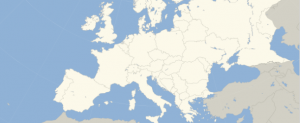 Europe’s QuantERA research funding programme brings together the scientific community, funding agencies, and industry representatives to leverage transnational cooperation. The QuantERA programme is designed to accelerate the development of quantum technologies (QT) in Europe, amid global competition. Quantum News Briefs summarizes a recent Science/Business article.
Europe’s QuantERA research funding programme brings together the scientific community, funding agencies, and industry representatives to leverage transnational cooperation. The QuantERA programme is designed to accelerate the development of quantum technologies (QT) in Europe, amid global competition. Quantum News Briefs summarizes a recent Science/Business article.
A member of the QuantERA Strategic Advisory Board – a scientific body with a broad range of perspectives in the QT field – was recently awarded the Nobel Prize in Physics. Prof. Alain Aspect, along with Prof. John. F. Cluster and Prof. Anton Zelilinger received the prize “for experiments with entangled photons, establishing the violation of Bell inequalities and pioneering quantum information science”.
Launched in 2016, the QuantERA research funding programme brings together the scientific community, funding agencies, and industry representatives to leverage transnational cooperation. QuantERA promotes collaborative research in QT, supported by 39 research funding organisations in 31 countries. Projects funded by QuantERA, so far, range from fundamental to applied, engaging 400 enthusiastic teams.
When QuantERA was founded, there were only “conceptual ideas”, which today have grown into product prototypes, Sir Peter Knight, chairman of QuantERA Strategic Advisory Board, told Science|Business on the sidelines of QuantERA’s Strategic Conference hosted in Kraków in September. “What we need to focus on is raising money in substantial quantities, and [then] doing it on the big scale,” said Knight. For him, European researchers have an entrepreneurial spirit, and are eager to commercialise their projects. Click here to read original November 3 article.
*****
Researchers discover new method to characterize large quantum computers
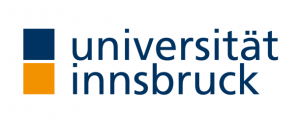 Researchers at the University of Innsbruck, in collaboration with the Johannes Kepler University Linz and the University of Technology Sydney, are now presenting a method to characterize even large quantum computers using only a single measurement setting. Quantum NewsBriefs summarizes the announcement below.
Researchers at the University of Innsbruck, in collaboration with the Johannes Kepler University Linz and the University of Technology Sydney, are now presenting a method to characterize even large quantum computers using only a single measurement setting. Quantum NewsBriefs summarizes the announcement below.
The gold-standard for the characterization of quantum devices is so-called quantum tomography, which can draw a complete picture of a quantum system from a series of snapshots of the system. While offering plenty of insights, the number of measurements required for tomography increases rapidly, with three times as many measurements required for every additional qubit. Due to the sheer time it takes to perform all these measurements, tomography has only been possible on devices with a handful of qubits.
The researchers demonstrated a practical approach for characterizing even large-scale quantum systems, relying just on a single measurement setting, independent of the system size. This is achieved by moving partly away from the binary computation that is inherent to both quantum computers and to their classical predecessors.
Extending qubits to four-level ququarts thus enables us to store and measure the entire information necessary for tomography in one go,” said Innsbruck physicist Roman Stricker. Combining this way of measuring with a data analysis approach named “classical shadows”, originally developed by Richard Küng from Johannes Kepler University Linz and colleagues, the team has demonstrated a highly efficient characterization approach. Using the combined techniques, they were, for the first time, able to completely characterize an eight-qubit system in real-time. Küng emphasized that their framework has the potential to enable real-time characterizations of large future devices, which is a significant next step towards scalability of quantum computers.
Click here to read original announcement in U of Innsbruck news room.
*****
Sandra K. Helsel, Ph.D. has been researching and reporting on frontier technologies since 1990. She has her Ph.D. from the University of Arizona.


















